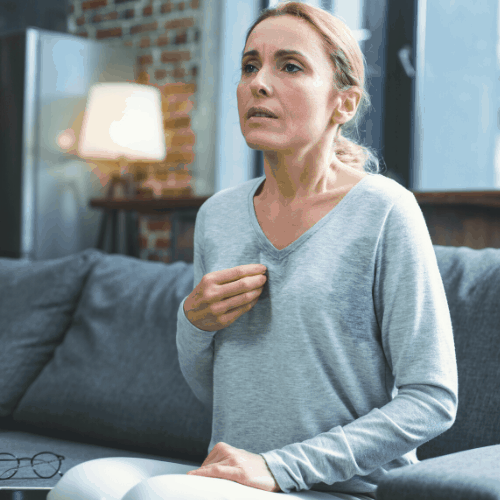May 17 - May 19, 2024
Healing Your Sole
Nourish your feet as you move through the ages and stages of life.
View a listing of all our programs, workshops, and events—including our best-selling Happiness Retreat, Silent Meditation Retreat, and Ayurveda Wellness Cleanses.
Order a copy of our latest retreat guide and discover all the ways to relax, renew, and discover inner peace—programs, events, workshops, spa treatments, and more.
Quiet the mind and align with the present moment in our happiness, meditation, and silence programs.
You choose the dates, the activities, and Ayurveda treatments—we’ll do the rest. The perfect custom vacation!
The ancient science of Ayurveda gives us all the tools we need to live a holistic, healthy, and happy life in today’s modern world.
Guest teachers, thought leaders, authors, and experts inspire with their timely wisdom and transformative programming.

Ayurveda’s Holistic Approach to Menopausal Wellness
A 4-Week Online Retreat
Our on-demand programs are great introductions to the healing power of Ayurveda. Discover the Ayurvedic Daily Routine, overcome insomnia, and more—whenever, wherever!
Explore our campus in an interactive 360° virtual tour with guided navigation or on Google Maps.
Discover an extraordinary space for transformation and community building in the Blue Ridge Mountains.
Explore our campus in an interactive 360° virtual tour with guided navigation or on Google Maps.

Anxiety is a widespread psychosomatic condition that currently plagues more than 35 million Americans. Typically, it starts with continuous exposure to stressful conditions. If you are experiencing symptoms such as panic attacks, unreasonable nervousness, numbness of body or mind, you are not alone. While a certain level of anxiety helps one stay alert, consistent exposure to stress triggers can lead to chronic anxiety—a hazard that keeps people from sleeping, being productive, and staying healthy, as well as potentially disrupt vital functions of the body.
Research on the impact of anxiety disorder shows it hampers the emotional response in the brain. When a situation triggers anxiety, neurotransmitters carry the impulse to the sympathetic nervous system causing increases in heart and breathing rates, tension in muscles, and changes in flow of blood from the abdomen to the brain. The response puts the body on an alert—causing headaches, nausea, and occasionally diarrhea. Much like tightening a chain beyond its capacity can cause the links to break, persistent stress response cycle can significantly impact the body for the worse.
Anxiety has been found to have an impact on digestive tract with implications in form of Irritable Bowel Syndrome and dyspepsia. Studies at Harvard Medical School and Lown Cardiovascular Research Institute concluded that both men and women with heart diseases are more likely to suffer a stress-induced heart attack.
Some prominent symptoms of anxiety/depression include
1. Generalized Anxiety Disorder
People might experience persistent anxiety over concerns related to health, finance and other common life events. Worry is usually bigger than the actual situation. One feels lethargic, edgy, and has trouble sleeping or concentrating.
This causes headaches, muscle tension, sweating, and negative thoughts that hamper the flow of work in routine life. 
2. Panic Attacks
Panic attacks, as the nomenclature rightly suggests, are not simple. These are different from GAD because in this case the anxiety is not about insecurities of leaving a job or similar worries. A person with panic attack feels a sense of sudden doom leading to breathlessness, faster heart beat and a fear of having a heart attack. These physical and mental sensations are intense. Symptoms of panic attacks include
3. Social Anxiety
This condition is also recognized as social phobia or the fear of performing poorly in public. This usually surfaces in cases of public speaking, eating or drinking in public, dating and meeting new people. Its symptoms include
4. Agoraphobia
It is the fear of situations where you may find it difficult to escape like public spaces, crowded spaces, on the flight of using public transport. Something as simple as leaving your home can cause anxiety under this condition.
5. Obsessive-compulsive disorder or OCD
The most common symptom of OCD is irrational repetitive behavior. OCD, an anxiety disorder, can be in the form of recurring undesirable thoughts that you seem to have no control over, repetitive behavior patterns like cleaning , washing hands, checking the lock as a way to escape recurring thoughts. For a person with OCD, repetitive behavior is a temporary recourse from the obsession. Some types of OCD are
6. Post-Traumatic Stress Disorder
As the name suggests, PTSD has its roots in a physical or emotional trauma or traumatic event like exposure to violence, military combat, natural disaster or a life threatening accident. This primarily happens to the individual involved in the incidence and occasionally, it can also occur in a witness of an untoward incident. Symptoms that emerge in PTSD cases include
While anxiety has severe repercussions on one’s mental and physical health, there are long-lasting holistic solutions to dealing with anxiety that may reduce the need for anti-anxiety medications.
To take the first step towards setting yourself free of anxiety, it is important to acknowledge the condition and it’s symptoms. Denial of the issue prolongs the disorder, inviting more harm to the body. Once the person is aware of the problem and its effect on the body it is easier to take corrective course of action.
Most people struggle with seeking help. This could be either due to preconceived notions about what counseling may or may not achieve for them or it could be from not knowing where or whom to seek help from.
For anxiety counseling, therapists commonly administer CBT (cognitive-behavioral therapy). CBT focuses on recognizing, comprehending, and changing thinking patterns consciously. It involves home assignments where patients on completion of tasks record the improvement in their symptoms that puts them in the driver’s seat in treating anxiety disorders. A part of CBT is exposure therapy where patients are exposed to triggers of anxiety or fear and then trained to be less anxious about them. Alternative treatments involving yoga, deep breathing practices and meditation have been found to tremendously complement the success of counseling therapies including CBT.
Recent studies have found that the practice of yoga can help diminish the symptoms of GAD (Generalized Anxiety Disorder). The main solution that yoga seemed to produce for people dealing with anxiety is that it reduced a person’s irrational habit of worrying, a trigger for anxiety. A regular practice of yoga increases your self-awareness, helps you stay calm and relaxed in the event of stressful situations. This awareness helps you discern the real from the unreal, the truth from the imagined. It enables you to be witness to the symptoms of anxiety in your body and mind, but creates a sense of distance or detachment from the symptoms which then allows you to deal with the symptoms better. A yoga practice integrates asanas (body postures or poses), pranayama (deep breathing tools), meditation, and a deeper understanding of the essence of yoga as a union of mind, body and spirit.
What can yoga do?
Sustained psychological stress can be an important trigger for anxiety to set in. Yoga helps eliminate stress from the body and mind, and as a result, it can have a profound effect on the body’s stress response:
The yoga poses below work on the stress centers in the body. Practicing them can bring about calm to the mind and body. A calm mind is better equipped to deal with the same stressful situations that a wavering restless mind may struggle to deal with.
These practices increase your lung capacity, trigger release of happy hormones, help you sleep better, produce a sense of relaxation and immediately calm down the mind. For those who meditate, pranayamas are the best preparation to get into a meditative state. Some of the breathing techniques that can help fight symptoms of anxiety include
A common problem that patients of anxiety disorder deal with is a mind that is constantly swirling with thoughts.
Meditation is the delicate art of doing nothing and letting go of all the efforts to relax into your true nature which is love, joy and peace. –Sri Sri Ravi Shankar
Here, a contemporary practice that has been revolutionary in allowing patients of anxiety to deal with this restlessness and uncontrolled thoughts is the Sudarshan Kriya Yoga (SKY) meditation technique. It is a powerful rhythmic breathing technique being practiced by over 4.5 million people all over the world. No matter what the state of mind is and how many thoughts one has or how restless the body is, 10 minutes of SKY breathing instantly calms you down. Cognized by Sri Sri Ravi Shankar, global humanitarian and spiritual master who founded the International Association For Human Values and the Art of Living, the practice is concluded with an effortless meditative state where practitioners report clarity of mind, prolonged moments of thoughtlessness, slower and steadier heart rate, and calmness of being. SKY uses specific cyclical, rhythmic patterns of breath to bring the mind and body into a relaxed yet wakeful state.
Another common side effect of anxiety is sleeplessness. Your body needs proper rest to recuperate from a tiring work day and to be productive the following day. What can help you bridge the gap between the amount of rest you get and the amount of rest your body needs, is yogic sleep. In the afternoon, give yourself a 20-minute break for yoga nidra or yogic sleep. This is a structured power nap, a meditative way of giving yourself deeper rest, where you take restful awareness through different parts of the body, relaxing them one by one until eventually on completion of the guided meditation, you feel rested and re-energized mentally and physically.